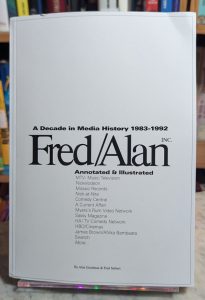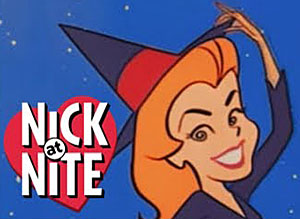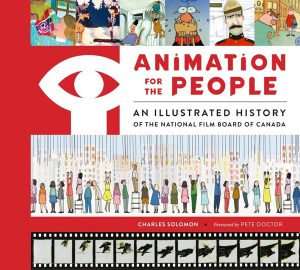



They were ignorant and they were wise, they broke every stupid rule they hated, and they pioneered what we know as Media Branding today. Reading Fred/Alan Inc.: A Decade in Media History 1983-1992 by Alan Goodman and Fred Seibert has been a page turn after page turn of revelations, easily recognizable (and memorable) ad campaigns, and a crash course in ethical business leadership. This book shows how one company helped define what the television and popular culture landscape would look like for more than two decades and whose presence can still be felt today – Buckle up, this is a wild ride!
 My familiarity with the work of Fred Seibert is tied to the animation that his company, Frederator Studios, would produce or even his tenure as Hanna-Barbera president, producing much of the animation that Cartoon Network would become known for. I crossed Alan Goodman’s work often as a younger person soaking up episodes of The Mystery Files of Shelby Woo and various episodes of Clarrisa Explains it All. Come to find out, these two friends had been defining and shaping a good portion of the cable television landscape far earlier than I ever realized.
My familiarity with the work of Fred Seibert is tied to the animation that his company, Frederator Studios, would produce or even his tenure as Hanna-Barbera president, producing much of the animation that Cartoon Network would become known for. I crossed Alan Goodman’s work often as a younger person soaking up episodes of The Mystery Files of Shelby Woo and various episodes of Clarrisa Explains it All. Come to find out, these two friends had been defining and shaping a good portion of the cable television landscape far earlier than I ever realized.
The launch of MTV was their brainchild; pulling on their experiences as disc jockeys at Columbia University which would inspire the form that MTV would take – complete with VJs, video jockeys. Working with New York-based, Manhattan Designs, they broke conventions by featuring a logo that never stood static and an ad campaign that challenged reader’s (and advertisers!) expectations of what a television channel could and should do. Fred/Alan Inc. commissioned work from a slew of artists across the world, from a fantastic piece by R. Crumb, to the artwork of Alex Grey, to even featuring photography from Mary Ellen Mark, amongst many, many others. They even were the first commissioned project from Broadcast Arts, who would eventually change into curious?ictures, which would go on to produce many animated series, films, and video games we know today.
But their success at launching MTV would result in so many more projects for the company. Nickelodeon came calling, hoping to change their last place children’s network into something, anything resembling success. Tapping Boston-based Corey and Co. to design what would become the iconic orange logos and Charlex, Noyes & Laybourne, Colossal Pictures, and Buzzco, naming only a couple of artists they worked with, to produce animated interludes and branding for the channel. The result? Another smash cable hit – Nickelodeon would become the number one children’s network (an interesting marketing tactic on its own) for the next 25 years.
 When Nickelodeon expanded its evening programming to include classic live action television, it was Fred/Alan that Nickelodeon executives tapped. Soon Nick at Nite and TV Land were dominating their own demographics. When MTV wanted to expand, they pulled on Fred/Alan to develop what would become VH1.
When Nickelodeon expanded its evening programming to include classic live action television, it was Fred/Alan that Nickelodeon executives tapped. Soon Nick at Nite and TV Land were dominating their own demographics. When MTV wanted to expand, they pulled on Fred/Alan to develop what would become VH1.
Both the MTV Video Music Awards and the Kids Choice Awards were also developed by Fred/Alan Inc. and, even today, still utilize the iconography developed 40 and 25 years later, respectively.
And it’s not just cable channels! Fred/Alan Inc. would roll out ad campaigns for the Swatch, Sassy Magazine, Barq’s Root Beer, even Pentech which would directly impact the creation of Spongebob Squarepants (by registering “Spongeboy” with the copyright office forcing a last minute name change to the series, my boy!).
 I think what separates Fred/Alan Inc. from any other company in whatever category you can try and put them into is that bold creative choices matched with fierce protection of commissioned art and artists can create a successful company that can impact generations of individuals around the world. How cool is that?
I think what separates Fred/Alan Inc. from any other company in whatever category you can try and put them into is that bold creative choices matched with fierce protection of commissioned art and artists can create a successful company that can impact generations of individuals around the world. How cool is that?
“It’s an industry. The products are made in factories.
A factory is no place you want Fred or Alan.”
A lot of the projects and branding initiatives described in this book were surely worked on simultaneously. As such, the book doesn’t stick to an absolutely chronological timeline which can make the cause and effect of various successes and failures a bit of a challenge to keep in order. Additionally, the writing for some of the projects, like the work launching Mr. Moviephone or even the work done for the HBO Honeymooners specials, undersells just how uniquely special these undertakings were. That’s not a criticism of the authors, there are so many projects Fred/Alan Inc. worked on in such a relatively short amount of time that it’s understandable to focus on the larger channel brandings, but because of the blog-like nature of this book, it works as a great companion piece to other topics depending on what you’re interested in learning more about.
Fred/Alan Inc.: A Decade in Media History 1983-1992 is a fantastic guided tour by Alan Goodman and Fred Seibert and is available as a Paperback and a Hardcover. It has also been released as an eBook on PDF through the Fred/Alan Archive in which you will find features videos, music, and animations that accompany the text.
 Make sure you keep your eyes locked at your local bookstore. Charles Solomon’s newest book, Animation for the People: An Illustrated History of the National Film Board of Canada, has a street date right around the corner of November 25th. Here’s how publisher Abrams Books describes the book:
Make sure you keep your eyes locked at your local bookstore. Charles Solomon’s newest book, Animation for the People: An Illustrated History of the National Film Board of Canada, has a street date right around the corner of November 25th. Here’s how publisher Abrams Books describes the book:
“A gorgeous celebration of the influential and Academy Award–winning animators of the National Film Board of Canada
Animation for the People traces the growth of the National Film Board of Canada and its animation artists, highlighting significant films, original visions, and innovative techniques.
Through interviews conducted by author Charles Solomon with Board filmmakers and other animation artists, as well as extensive original artwork from the films, readers will discover both the creative process of and the unusual techniques used by this unique brain trust.
With 78 Academy Award nominations and 12 wins, from Sheldon Cohen’s coming of age short The Sweater to Norman McLaren’s experimental parable Neighbours, the NFB has shaped the world of animation.”
That’s all for now! See you next month with another round up of animation book news and reviews!